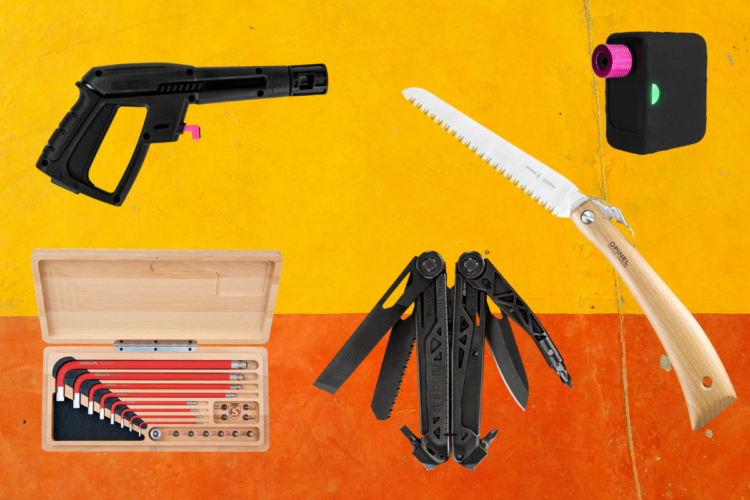Now this is probably the ultimate in bike computer electronics: The PowerTap SL+. I really love this thing and I’m going to have a great time introducing this to everyone. Now to get the bad part out of the way: the MSRP on the PowerTap SL+ for MTB is $1699. Yes. that’s a steep price and costs more than many bikes out there but if you’re a serious racer or someone who truly wants cutting edge technology, then this is it – look no further!
The screen shot above shows the details tab from the included Power Agent software, the other half of this dynamic training duo. This graph shows a lap I rode at a local riding spot and covers 5 parameters: power output, speed, cadence, heart rate and torque. Cool? Yes. But there is so much more to the PowerTap SL+ that will make you a better, smarter rider. A super cool feature for those who have an ANT+ enabled device like the Garmin Edge 705 is that you can use that head unit in conjunction with the PowerTap SL+, allowing you to add elevation and temperature to your data collection. Double super cool!
Hardware
Before we get too far into the software, let’s go over the hardware and what you get in the box. Of course there’s the PowerTap hub, brake disk, and hardware for mounting the disk including shims and T25 bolts. There is also the wireless head unit, bracket, tire straps, and the coded heart rate monitor strap. On the desktop side there’s the Power Agent software, PC USB cable with base, product CDs and a neat “Training with PowerTap” guide by Allen Lim Ph.D. Essentially you get everything you need minus spokes, rim and QR. Just make sure to follow the building guide and have these wheels laced up in a 3X pattern for proper operation.
Assembling the PowerTap and wheel should be left up to a professional wheel builder. Based on the cost of the PowerTap SL+, the last thing you want to do is damage the hub. I ended up lacing my SL+ hub up to a Sunringle SR25 32-hole rim and double butted DT competition spokes with alloy nipples. With my truing stand, a little time, and a beer or two, I finally got the wheel tensioned correctly and was off. Out of the gate I wanted to make sure that this unit was reading correctly because I ultimately want to know how much power I am actually putting on the ground.
In my opinion, the best accessory is the one that you don’t know is there and that’s exactly how the PowerTap SL+ feels. With zero wires and a very small head unit that connects using just two tie straps and double-sided tape, this thing is pretty simple and low maintenance. Strap on the heart rate monitor, turn on the unit, and it’s recording.
Software
The screen shot about shows the summary screen in the Power Agent software (depending on when your hub was packaged it may include the 7.0 version). The Saris website is not only very informative but also very user-friendly so it’s a breeze to update the software no matter what version ships with your unit.
If you look at the data for a moment, it states that this particular segment was four minutes long. During that time you can see my heart rate range heart and power distribution. The software allows you to custom tune the actual parameters but as a novice user the initial settings work just fine. From past experience I know my heart rate always runs on the faster side of things and I can tune the data to better reflect that (consult a doctor first). You also have the ability to add notes for that day – type of weather, how you were feeling, where you were riding etc.
During training rides the PowerTap breaks the data into segments and saves it automatically. Segment breaks occur whenever you stop the bike for a few seconds and you can also tap both buttons simultaneously for two seconds to manually create a new segment (lap, marker, interval, etc.). The PowerTap has enough internal memory to save weeks worth of riding data without having to download and clear the memory. I usually couldn’t wait to check my data after each ride so I dumped the memory often after downloading the data to my PC.
The information contained within the included CDs features an electronic set-up guide that is very extensive and should be looked over before you go and start riding. The guide illustrates how to use the vast menu selection on the PowerTap plus it shows you how to set proper wheel size and other parameters.
On the trail
After using the PowerTap I can honestly say it has changed the way I ride and has made me a smarter rider. By paying close attention to how many watts are being used you start to think about how the terrain impacts energy usage. For example: riding at 12 mph on pavement (level ground) takes about 200 watts. On hardpack it’s 260 watts at the same speed and if you’re lazy and roll on to the grass at the side of that hardpack trail it jumps up to about 320 watts. This alone makes you rethink your line choices when riding. It also makes you think about how much energy are you expending on fumbled switchbacks and leg burning ascents. Sometimes spending a bit more energy coming into that turn (slightly faster) reduces peak output through the turn (in some cases I had to produce a good 900 watts to make a turn).
I used the PowerTap on both my XC (4″ bike) and my Trail /AM bikes (5-6″ depending on what suspension I was rocking at the time) and have had no problems with a bearing going bad or failure due to vibration. For my upcoming 24 hour race you can rest assured this unit will be there as a training aid and as a real-time measurement tool to help me improve my laps and conserve energy.
Now it’s not my place or intention to use this review as a know-all-guide to the PowerTap SL+. I’d love to go into more detail but it would take several pages and I’m still not an expert by any means. For further information, check out the Saris website.
I would like to thank the folks at Saris for sending over the PowerTap SL+ for review.
If anyone has any questions let me know – I would be happy to talk about the SL+ further.
Technical Specifications from Saris
- Wireless 2.4 GHz transmission featuring ANT+Sport
- Available in SL 2.4+ model
- USB Download.
- Coded heart rate.
- Proprietary 160mm heat treated rotor and carrier design. Fits most major disc manufacturers.
- Displays and records:
- Power (current, average and max)
- Heart Rate (current and average)
- Cadence (current and average)
- Speed (current, average, and max)
- Energy Expenditure (total kjoules)
- Ride Distance (miles or km)
- Ride Time
- Programmable Odometer
- Customizable display lets you show power, heart rate and cadence simultaneously.
- Download up to 15 hours of recording at 1-second recording rates.
- Records unlimited intervals.
- Functions as a downloadable heart rate monitor for multisport.
- Displays and records Power, Cadence and Speed with or without zeros, and Time of Day.
- Training with Power DVD included.
- CycleOps PowerAgent software included.
- Durable steel axle, alloy free hub body and sealed cartridge bearings.
- Carbon Fiber Power Windows
- Data is sent straight from the hub to the computer, no strings attached.
- 680g complete (incl. Rotors)
- Hole Counts: 32



























9 Comments
Jun 8, 2010
Jun 10, 2010
The Idea of tossing on the wheel and checking out how the different suspension designs go is a great idea and probably be a first for bike reviews.
The only thing about trying to do that entire activitiy is that the Powertap will break it into segments if you stop pedaling for a second or two.
I also feel the pedal based idea something of a cringing factor to myself. I hit rocks all the time...
Jun 10, 2010
Jun 8, 2010
Jun 10, 2010
What you'll find is how much power you lose into your suspension vs a hardtail if you swap the wheel through. I'd think this would be a better way of reviewing the different pivot designs for pedal bob/power loss etc...VPP vs DW vs FSR vs....??
The pedal based meter is supposed to be coming soon, but the prospects of banging that on a rock makes me cringe. Quark makes cranks centric systems like SRM and have yet to pop it into a triple.
Element, I'm impressed you posted real ride data....now do the 60 minute FTP test..bring a bucket to chunder into..it's a tough one. Cheers
Jun 9, 2010
Know where the technology is going next? The power meter will be in pedal spindles. The technology is already out there, and people are experimenting with it (I want to say speedplay is working with someone one it...). It's easy to imagine how something like this could be adapted to be used in a spindle: http://www.lcmsystems.com/iqs/dbitemid.18/sfa.view/load_measuring_pins.html
Jul 22, 2016
Oct 7, 2010
Jan 13, 2011